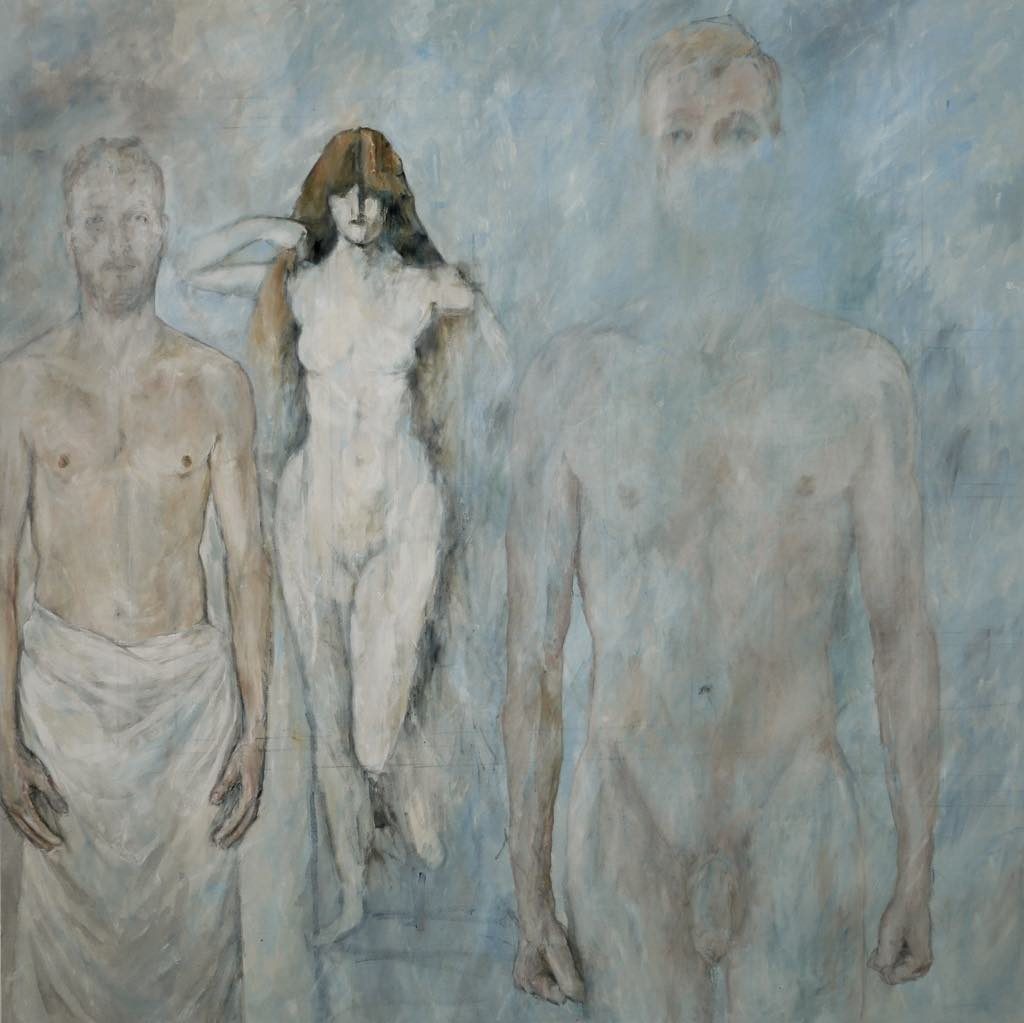
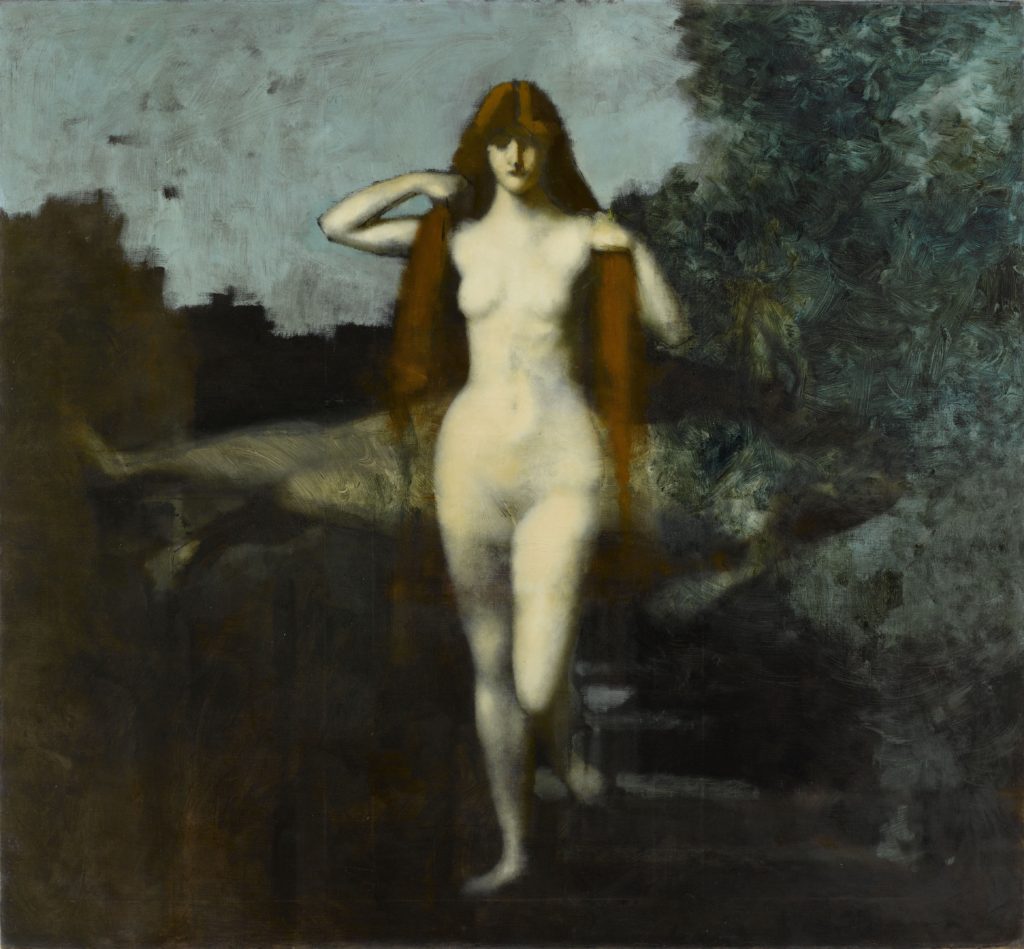
Those who haven’t yet visited the Musée Jean-Jacques Henner, renovated in 2016, now have a good excuse to do so: an exhibition of works by artist-in-residence Eugénie Alméras.
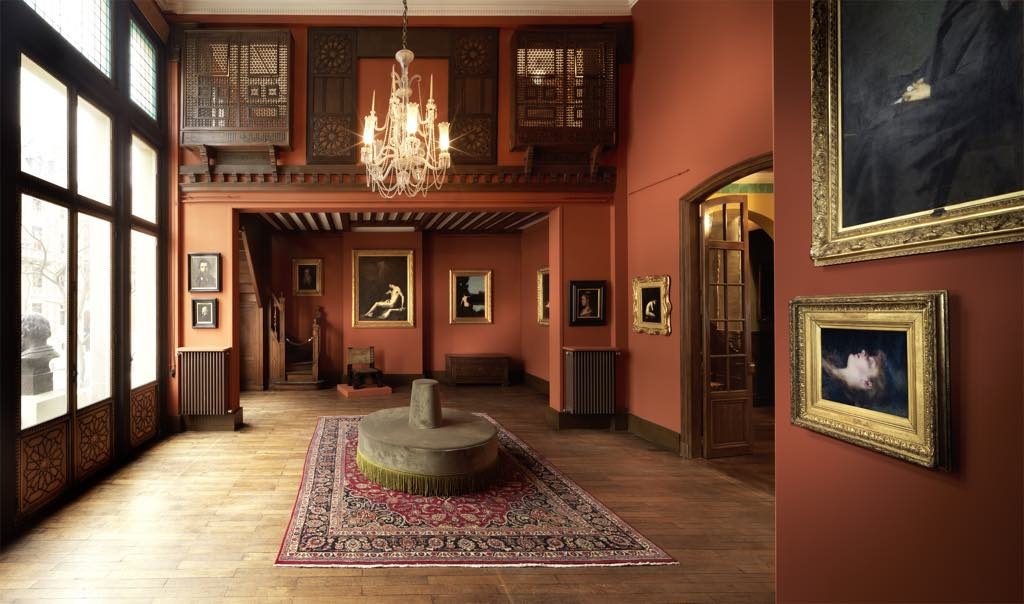
Henner (1829-1905) was a successful academic painter whose memory was kept alive by his niece, Marie Henner. She bought the home and studio of another artist, Guillaume Dubufe (1853-1909) in 1921, and in 1923, it became a state-owned museum.
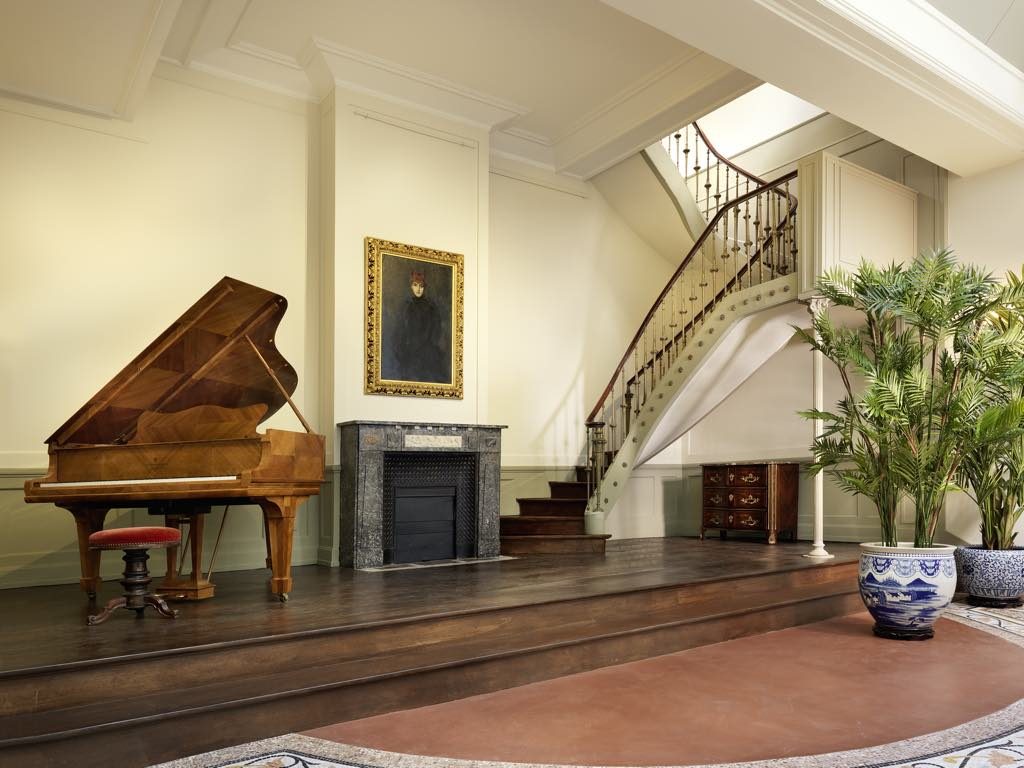
Thanks to the latest renovation, the 19th-century mansion’s winter garden, with its glass roof, graceful staircase, tiled floor and grand piano (a wonderful venue for concerts and other events; click here for the program) is now open to the public.
The museum is affiliated with the École des Beaux-Arts, which selects the artists in residence from among its graduates. Alméras’s works are scattered about the museum on easels and do not displace the works of Henner, whose paintings she discovered in 2016 and fell in love with for their Romantic, Gothic character.
This, together with Henner’s penchant for portraying redheads with flowing locks, immediately calls to mind the pre-Raphaelites, although Henner’s work is far more sober, with its usually plain, dark backgrounds. Alméras’s paintings, although inspired by Henner’s have a more ethereal feel, with diluted paint used to depict ghostly figures and mysterious night scenes.
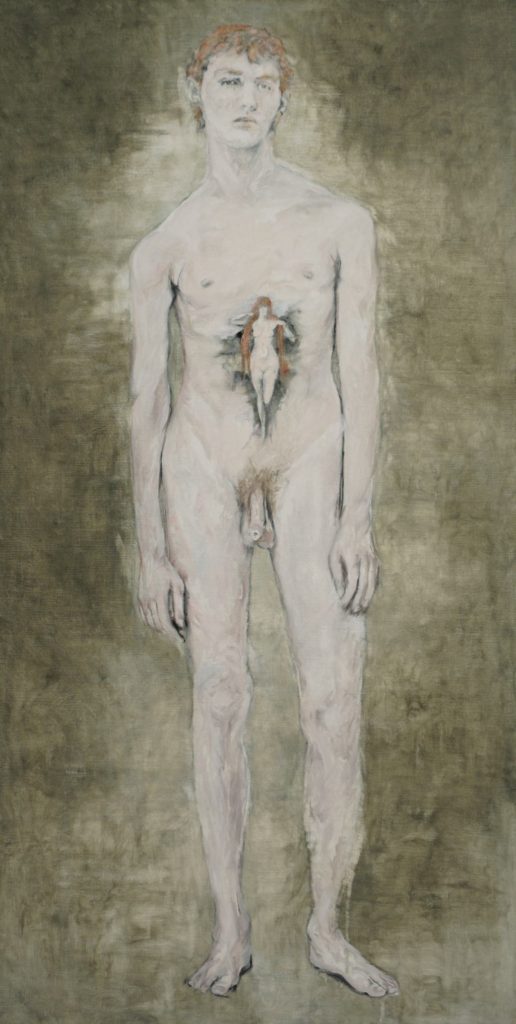
A Symbolist element is immediately introduced with her paintings of near-transparent male nudes pregnant, so to speak, with female figures contained within their bodies. I wondered if the idea was to evoke Adam and Eve, but Alméras told me that she saw the female figure as a sort of tattoo of a nymph (a Henner theme) and that she was trying to show the male nude, traditionally represented in virile poses, in a different way by bringing the feminine into the picture.
In another painting, a hazy male nude who seems to have ingested a woman’s face, which floats on his stomach, is surrounded by more substantially painted female nudes, copies of Henner’s “Naiads” (1877) with, off to the side, an incongruous pile of tires.

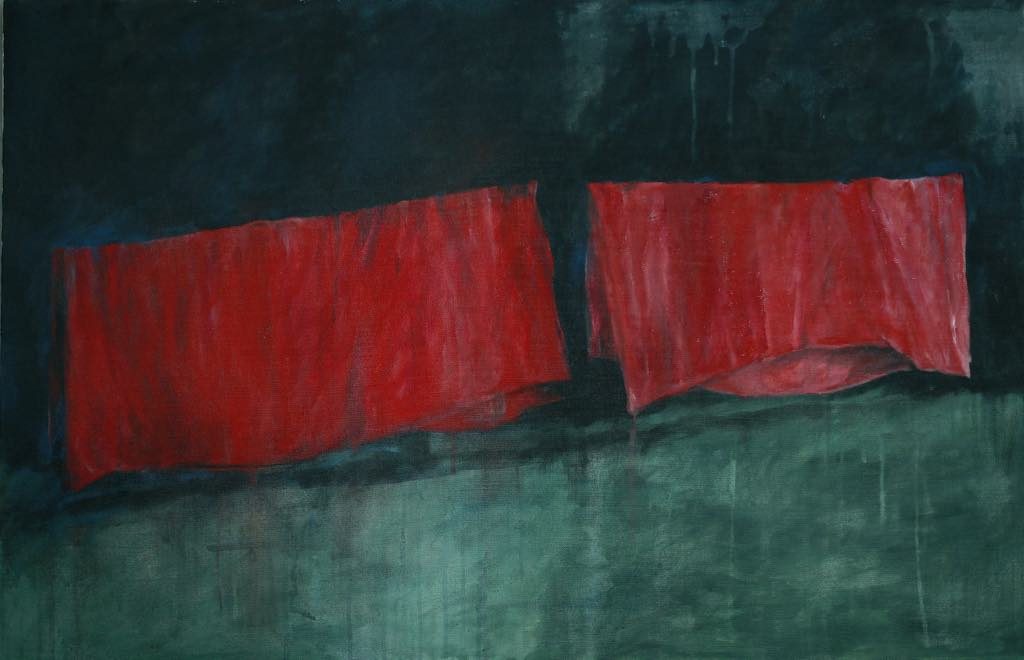
The piles of tires reappear in paintings displayed upstairs, by themselves and with mountains in the background. Why tires? Alméras explained that she lives in the Pyrénées and sees these piles everywhere. They can also be seen as a commentary on the degradation of the environment. Still other works portray campsites and circus tents.
As in Henner’s work, the color red dominates in Alméras’s paintings: in her self-portrait draped in a red cloth, for example, and in the painting “Linges Rouges” (2017), depicting red sheets hanging on a clothesline, an excellent illustration of her desire to “find beauty in the banal.”
Favorite
I like Eugenie’s ethereal presentation of the male body, the lack of overbuilt muscle, and the imperfection of the bodies, both male and female. The bodies don’t look posed, look “human and familiar” and the lightly foggy overall effect seems to celebrate that. I could live with those paintings.
I love Henner’s work . Thank you for your hard work. my only concern is that this museum has big problem with lights, they are not the best. hope you can fix the issue.